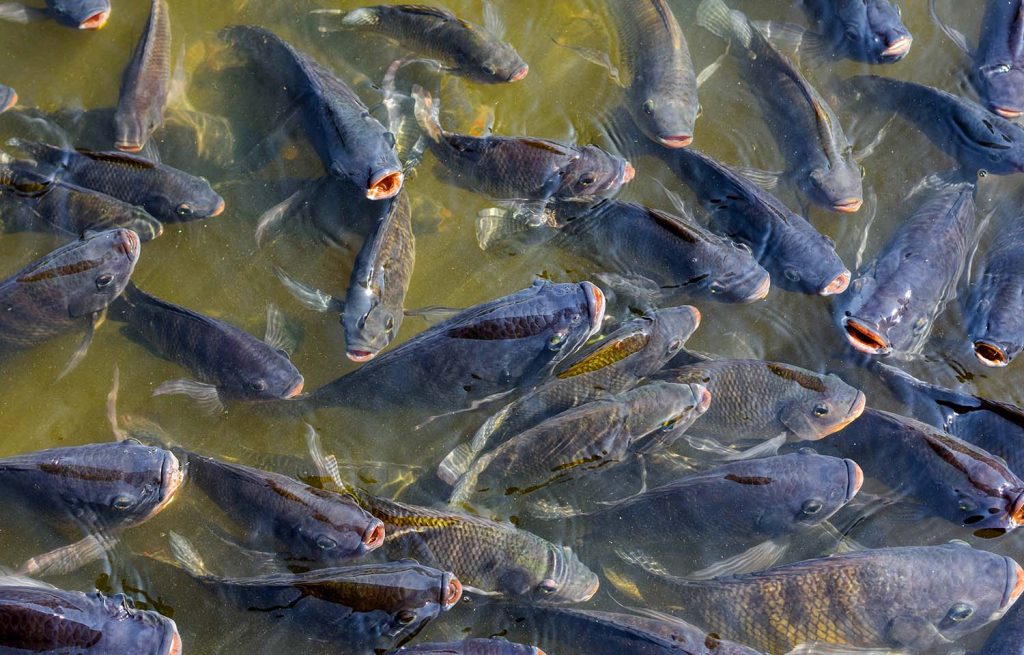Aquaculture is tilapia farming because of its numerous benefits. Harvesting is done in tanks, ponds, or cages. Tilapia is farmed around the globe, for instance, in the. Middle East, Asia, and the Americas. Assimilating, fast-growing, and easy to reproduce, tilapia only thrives in freshwater gained with minimal effort to create the right conditions.
Tilapia Farming Unveils New Opportunities in Business
Holding the title of the”atterr chicken’ is very easy for the fish tilapia. Responsive to its cultivation, tilapia is also adaptable to various surroundings and ecosystems. The fish is easy to farm, set up, and take care of because of its fast and simple abilities, a reason why so many aquafarmers.
The third and most important is the very low effort and minimal inputs required to reap large monetary benefits in a short period of time. As one of the most sought-after fish farmed around the globe, tilapia reaches its market potential in the shortest time frame of six to eight months.
Another reason is the little maintenance needed. Tilapia can thrive in natural or man-made ponds without the need for pricey feeds. Tilapia mainly consume algae, leaves, and grains. They are much cheaper to farm than carnivorous fish species due to the lack of protein-rich feeds needed.
Benefits of Farming Tilapia
Economically and environmentally, tilapia farming comes with a myriad of benefits. For starters, the fish is relatively cheap and requires the least amount of feed when compared to other fish. Plus, they are very much in demand and widely eaten for the taste as well as health benefits. And finally, the farming practice does not require a lot of equipment and has a low impact on the environment.
Job creation in both rural and coastal areas is significant as well, which has a positive impact on both regions.
Challenges of Farming Tilapia
With all the ease tilapia farming brings, it still possesses challenges. For instance, lack of proper water oxygen and sudden temperature changes can be harmful to the tilapia fish. In addition, an excessive supply of fish can decrease the prices in the open market.
Lastly, with all the fish in crowded areas, disease can pop up easily. Having said that, it is possible to minimize all of these with proper supervision and hygiene. Regular feeding, as well as the right amount of ease, seems to be the formula.
Strategies to Ensure Successful Tilapia Farming Services
Start with the basics, then, with time, take on additions as you grow with the new environment.
Examine your water source first before you set up the ponds.
Avoid overstocking; too many fish make oxygen scarce, thereby causing diseases.
Reduce the parameters of water molds, growth, and feed, and devise strategies to optimize the parameters.
Make it a habit to read about new techniques in aquaculture and what the government recommends.
Prospective Developments in the Farming of Tilapia
The tilapia fish farming business seems to be on the rise as there is a constant need all over the globe for cheap and healthy sources of protein. In addition, with the use of new technologies, automatic feeders, and enhanced water filtration systems, farmers can achieve higher yields and enhanced quality products.
Many countries now guide aquaculture and subsidize tenders in the aquaculture industry and thus simplifying the entry process for a lot of new business entrants to the arena. In simple terms, the business of farming tilapia fish is very lucrative and helps in ensuring food availability and advances the growth of rural areas.
Conclusion
The business of farming tilapia fish is very advantageous as it requires little management and affordable capital. It is the farming of tilapia fish that is arguably the most environmentally sustainable type of fish farming business. Optimum Farming strategies, water quality management, and proper selection of fingerlings can transform fish farming tilapia into a sustainable and lucrative business.
FAQs About Tilapia Farming
1. How long does it take for tilapia to grow to market size?
The tilapia fish reaches market size in a period of 6–8 months. However, factors like water temperature, feed quality, and species may affect growth.
2. Which water type is most suitable for tilapia aquaculture?
The optimal water type for tilapia farming is fresh water, with a temperature between 25°C and 30°C and a pH of 6.5 to 8.
3. Can tilapia be raised in fish farming tanks?
Yes, portable tanks and fish farming tanks constructed of concrete or plastic can be used to raise tilapia as long as the water is sufficiently aerated and changed regularly.
4. What is the feeding habit of tilapia?
Feeding tilapia can include a variety of plant-based feed, including commercial fish feed pellets that have the necessary protein content, algae, rice bran, and grains.
5. How lucrative is tilapia farming?
Yes, farming tilapia is one of the most profitable aquaculture ventures as it has a fast growth rate, coupled with a low feeding cost, and great demand at both national and international markets.


